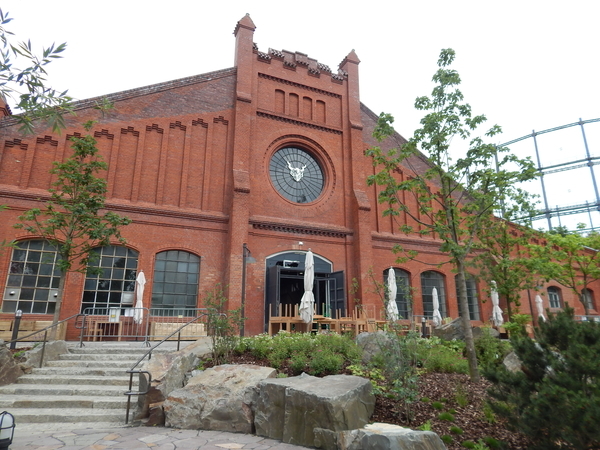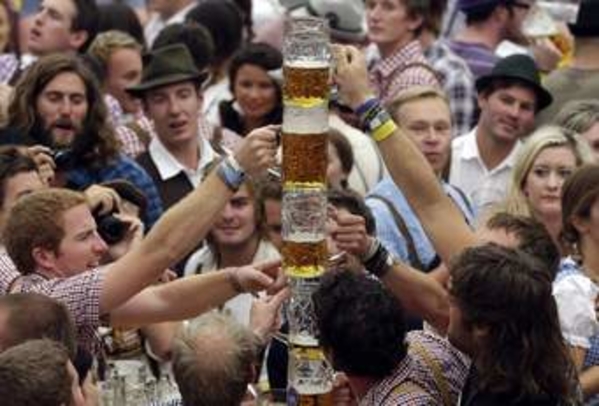Europe now leads craft beer revolution
Added: Thursday, September 20th 2018

The 185th Oktoberfest starts in Munich this weekend (22 September), shining a spotlight on age-old brewing techniques and the popularity of artisan beers. High-end, small batch and expertly-crafted beer, or “craft beer” as it’s more commonly known, has shot to global prominence in the span of just a few years as a primarily American trend.
But while craft has been around for years in Europe, the continent is now taking a global leadership role in craft beer innovation, according to new research from Mintel. (As proof of the growth of craft beer in Europe, Stone Brewing of California has opened a brewery, above, in Berlin to supply fresh beer to European countries, including the UK.)
According to Mintel Global New Products Database (GNPD), only five years ago North America – and the US especially – dominated the global craft beer industry, accounting for 52 per cent of all craft retail launches, compared to just 29 per cent for Europe.
Since then, says Mintel, the story has flipped. In 2017, 54 per cent of launches originated in Europe, and just 19 per cent in North America. Since 2013, Europe’s craft beer scene has experienced huge growth, with new craft beer product launches more than doubling, experiencing growth of 178 per cent. While the US is still the single most innovative market globally, with 17 per cent of all global craft beer launches originating there in 2017, six of the top 10 most innovative markets are in Europe.
Jonny Forsyth, associate director for Mintel Food & Drink, says: “Over the last few years, interest in craft beer has migrated from the US into the UK and now into continental Europe. Our research suggests that Europeans are embracing craft beer because they ate looking for new, more exciting offerings compared to their usual beer options, especially in markets such as Germany, where brewers and beer styles have remained unchanged for centuries. “While markets like Germany, Belgium and the Czech Republic are still dominated by their own beer styles, when it comes to innovation, consumer interest in craft beers is already there and offers ample opportunities for manufacturers.”
Beer drinkers in Poland (64 per cent), France (63 per cent), Italy (61 per cent) and Germany (50 per cent), are all interested in trying different types of craft beer, such as India Pale Ale or other pale ales, which are already commonplace in the more mature UK craft beer market. Europeans are also willing to spend more on craft beer. Around half of beer consumers in Italy (52 per cent), France (51 per cent), Germany (46 per cent) and the UK (45 per cent) agree that craft beer “is worth the extra money”.
“Craft is the ‘new premium’ in beer and consumers are happy to pay more for smaller-batch, more hand-crafted options, rather than those that are mass produced,” Jonny Forysth adds. “For these consumers, craft beer taps into their desire for new experiences with a nod to the past for inspiration, offering new beer styles that have never been drunk before.”
But Mintel’s research reveals that European consumers do not care too much about the difference between a “true craft” beer (ie small independent) or a “craft-like” brand owned by big global brewers. Nearly half of Spanish beer drinkers (45 per cent) say it’s not clear what makes a beer craft and less than a fifth (17 per cent) of German beer consumers say it would impact their purchase decision if a craft brand was owned by a large company.
This point to an uphill challenge for true craft manufacturers, Mintel says. But there is reason for optimism as more than two in five (44 per cent) beer drinkers in the UK would like to see a system of certification of craft beer.
“The term ‘craft’ lacks a formal definition, which has enabled larger beer companies to capitalise on the craft boom, either by launching their own craft-style products or acquiring craft breweries, challenging what ‘craft’ really means for this industry,” Jonny Forsyth says.
“This practice of big brewers swallowing up profitable, smaller craft operators shows no signs of slowing down. An industry-wide definition could be both helpful to smaller manufacturers and welcomed by European consumers, as many beer drinkers want greater clarity and assistance in navigating the category.”
•The UK is the third most innovative craft beer market globally following the US and Brazil.
The 10 top countries for beer innovation are:
United States: 17%
Brazil: 9%
UK: 8%
Norway: 6%
Spain: 6%
Italy: 5%
France: 5%
Sweden: 4%
Mexico: 3%
Japan: 3%
Pictured below, the world-famous Oktoberfest in Munich, based on centuries-old beer styles, now faces competition from innovative new beers











